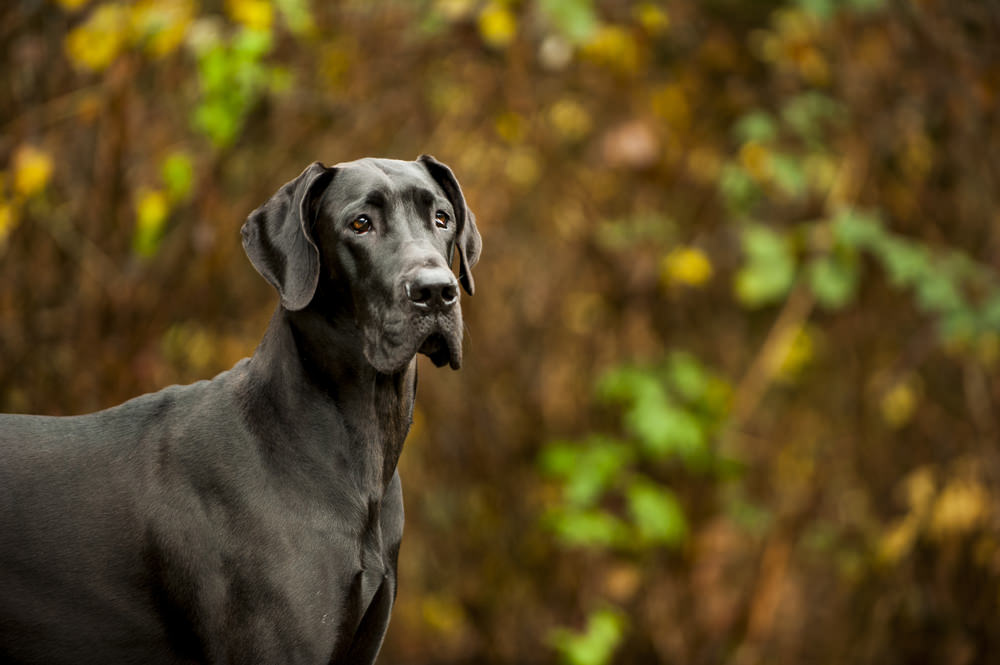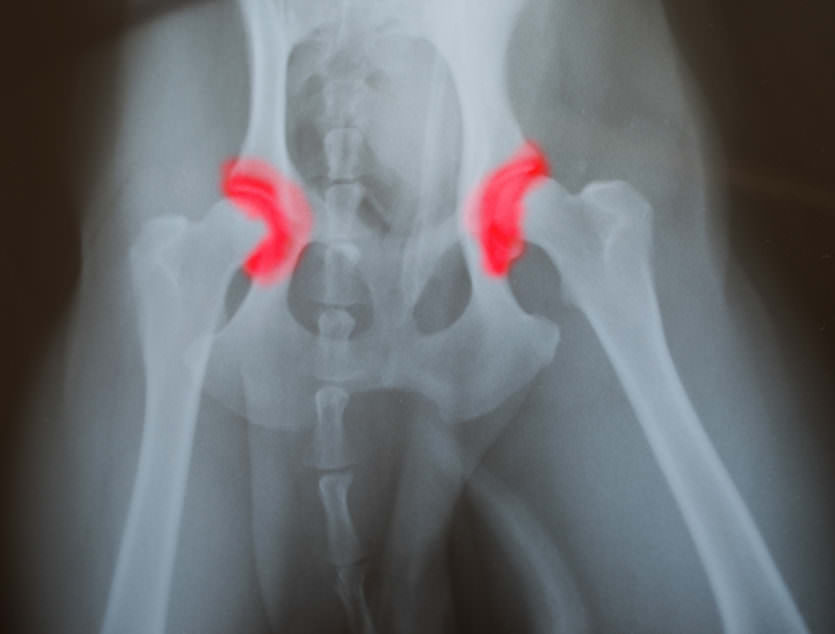
When the words “hip dysplasia” come up, people often think about big dogs. Great Danes, Mastiffs, even Golden Retrievers. However, hip dysplasia is becoming more common in small breeds, as well. According to a study by the Orthopedic Foundation for Animals of dogs born between 2011-2015, Bulldogs and Pugs ranked #1 and #2, respectively, for risk of hip dysplasia.
Related: Best Hip & Elbow Dysplasia Supplements for Dogs
Common Breeds At-Risk for Hip Dysplasia
- German Shepherds
- Rottweilers
- Great Danes
- Saint Bernards
- Neopolitan Mastiffs
- American Staffordshire Terriers
- Otterhounds
- Bloodhounds
- Newfoundlands
- Catahoula Hounds
- Chesapeake Bay Retrievers
- Golden Retrievers
- Norwegian Elkhounds
- Chows
- Old English Sheepdogs
- Pugs
- French Bulldogs
- Basset Hounds
What Is Hip Dysplasia?
Canine hip dysplasia (CHD) is known as a polygenetic multi-factorial disease. This means that there is a genetic component to the disorder, as well as other factors. Just because your dog carries the gene does not mean your dog will develop the disease. A diagnosis of CHD means there is a problem between the ball of the femur and the socket of the hip. With movement, the ball separates from the joint, causing abnormal rubbing and wear. Over time, this leads to excessive wearing of the cartilage and strain on the muscles, causing extreme pain.
Does Your Dog Have Hip Dysplasia?
First, your dog must carry the gene for CHD. If not, your dog is clear. However, there are signs that your dog might have a problem.
Common Signs of Hip Dysplasia
- Walking with a limp
- Pain on palpation (touching) of thigh area
- Lack of interest in play or exercise
- Abnormal gait (swaying)
- Inability or reluctance to climb stairs
- Crying/whimpering with movement
- Hopping (like a bunny) when running
- Slow or difficult getting up from a seated position
- “Clicking” sound when walking
Most of these signs won’t begin to present themselves until the dog is middle age. However, extreme cases can occur in puppies, as well. The only tested method for determining whether or not your dog has hip dysplasia is getting an X-ray, which can be done with your vet.
Help Reduce Risk of Hip Dysplasia
Although it’s difficult to control whether or not your dog has the CHD gene, there are some easy ways to help reduce the risk of your dog developing the disease.
Four Risk Factors You Can Control
Don’t Overfeed Your Dog!
Extra weight puts unnecessary stress on the hips and joints. But it’s also the calories that can be problematic. If a dog gets too many calories, this can lead to rapid growth, especially of the bones. Cartilage can’t keep up, so the chances of dysplasia increases. This is an even greater risk between 3-10 months of age.
Exercise Caution!
Exercise is great for your dog, but be careful over-exercising him. Also, be careful not to have your dog jump from excessive heights. Slippery surfaces are also a major danger. These are especially true for dogs that are more prone to hip dysplasia.
Related: Best Hemp Oil for Dog with Hip Dysplasia
Beware of Breeders!
Most breeders are reputable and do all they can to better the bloodlines of their breeds. However, there are some careless people who care more about profit and less about the quality of a breed. Check the pedigree of the parents before you commit. It’s even okay to ask for references. A good breeder will appreciate your concern!
Supplement Your Dog’s Health!
Humans have long known the benefits of supplements when it comes to joint health. The most common is Glucosamine & Chondroitin. There are several top-quality brands on the market, such as Happy, Healthy Advanced Hip & Joint soft chews. They were formulated by veterinarians with the highest quality ingredients. Given to your dog early, this supplement can help promote healthy joints lessen the effects of CHD.
Don’t Wait Until It’s Too Late
When it comes to the health of your furry friend, it’s never too early to start. Exercise, proper diet and supplements are great at reducing complications from CHD. If your dog is at risk, make sure you take the steps to ensuring a long, healthy and happy life.
These statements have not been evaluated by the Food and Drug Administration. This product is not intended to diagnose, treat, cure, or prevent any disease. The information on this website is not intended to replace a one-on-one relationship with a qualified healthcare professional.


 Toledo, United States.
Toledo, United States.